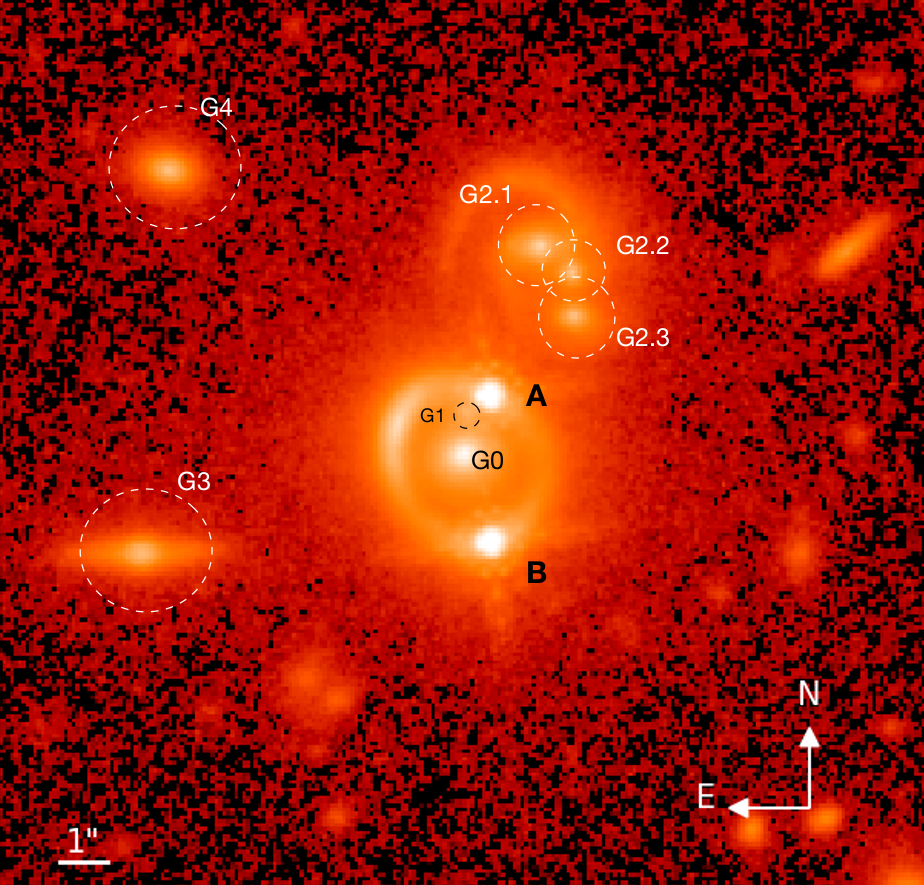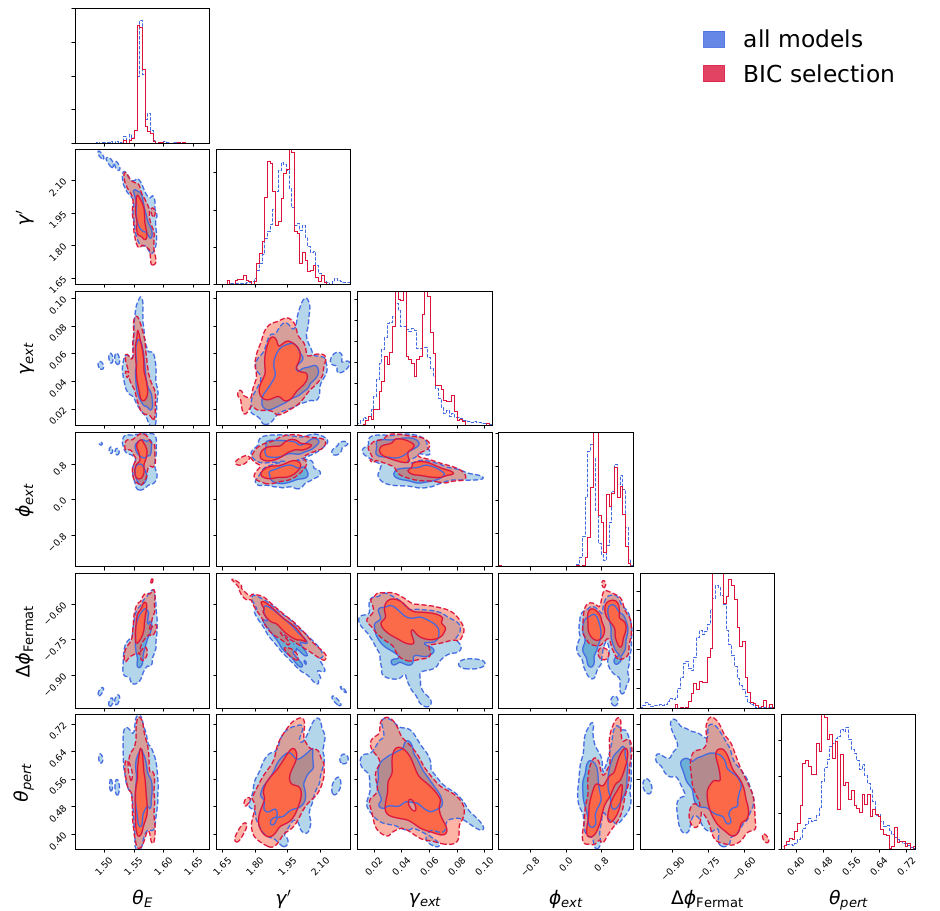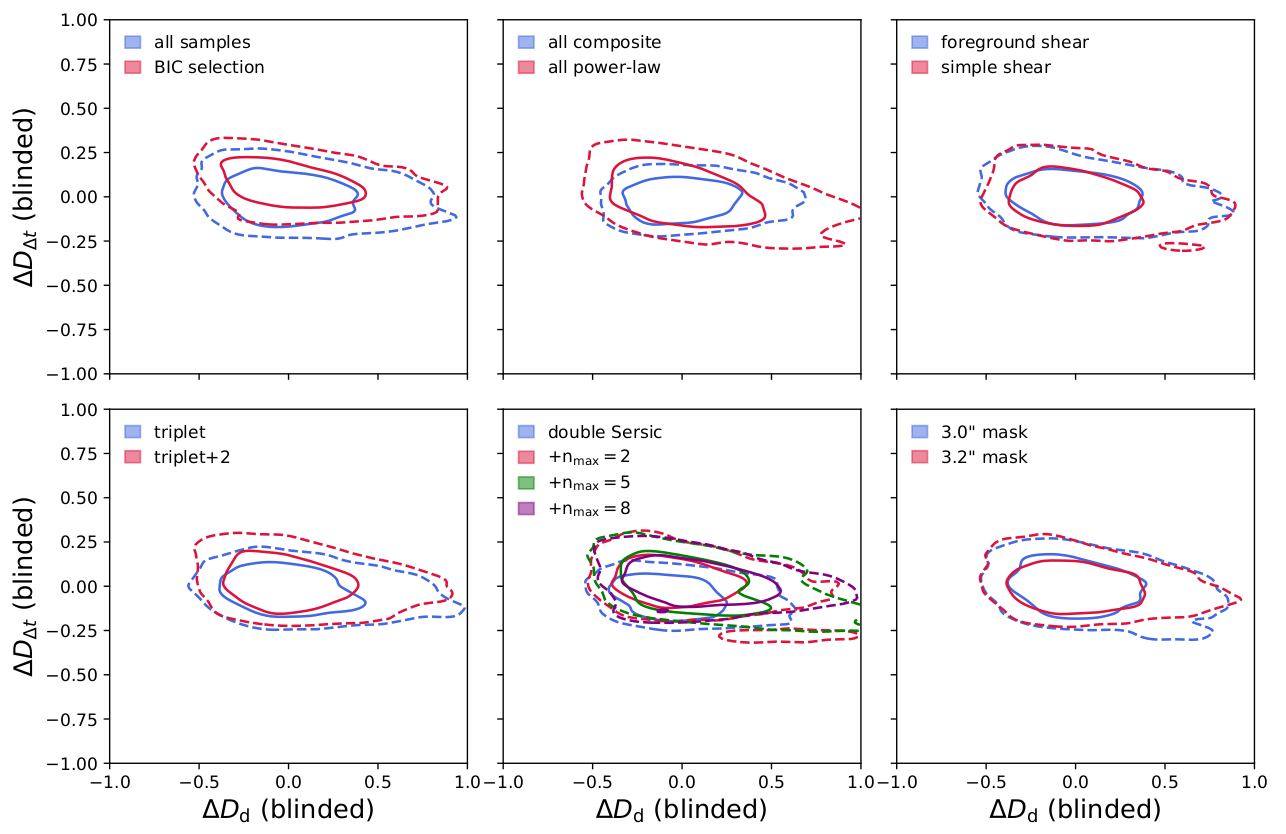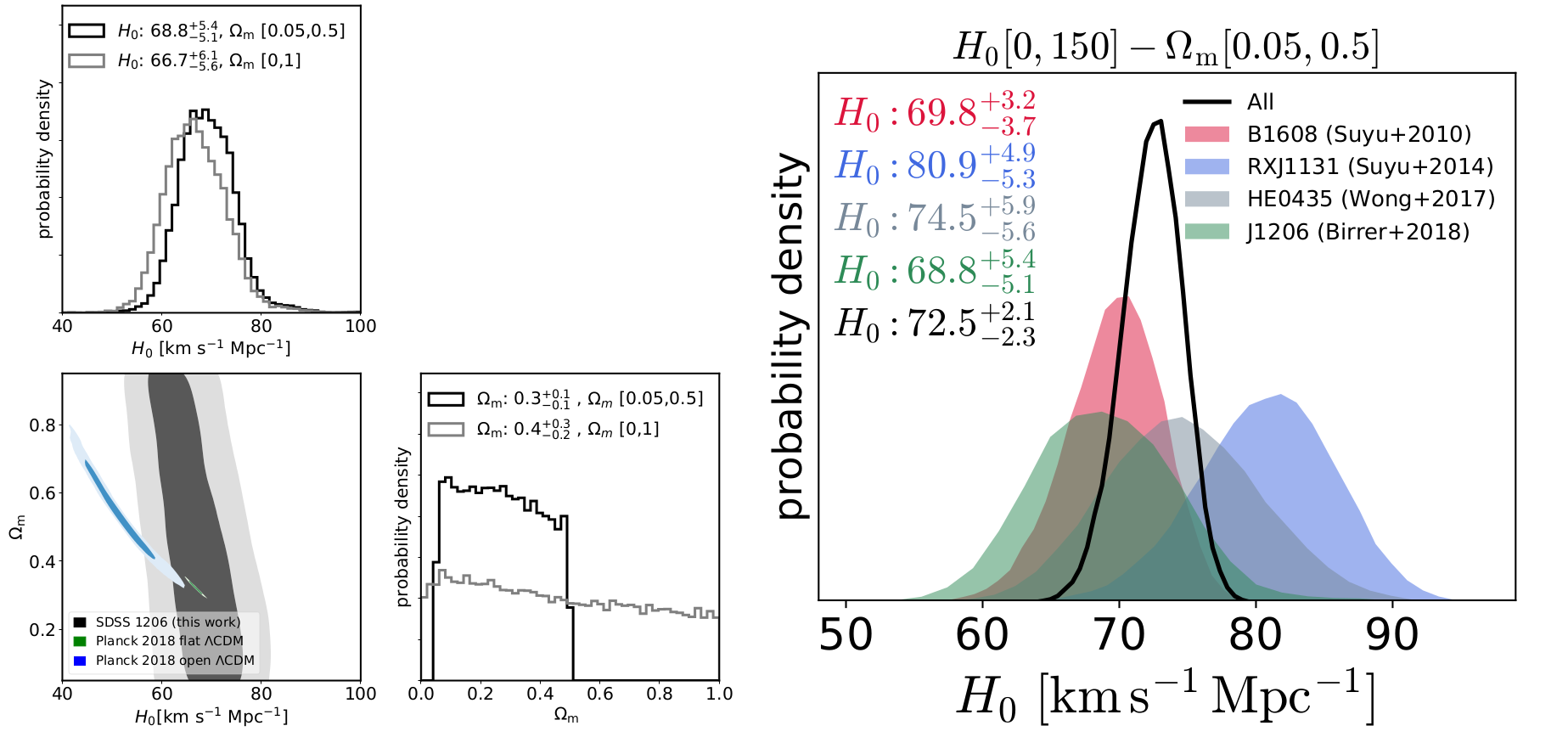H0LiCOW IX. Cosmographic analysis of the doubly imaged quasar SDSS 1206+4332 and a new measurement of the Hubble constant.
We present a blind time-delay strong lensing (TDSL) cosmography measurement from the doubly imaged quasar SDSS 1206+4332. The measurement is based on a self-consistent analysis of the COSMOGRAIL time delay, deep HST imaging data, stellar velocity dispersion of the main deflector measured from Keck spectroscopy, and extensive spectrophometric data to characterize the line of sight and immediate environment of the lens.

In order to quantify the uncertainties arising from assumptions in the lens modeling, we construct 128 different models and combine their likelihoods and marginalize over the choices, based on an objective measure of goodness of fit that takes into account the varying degrees of freedom and number of data points. We take into account the potential source of uncertainty arising from time-delay microlensing, which turns out to be almost negligible given the properties of SDSS 1206+4332.

Following the H0LiCOW protocol the analysis was kept blind until the very end, in order to prevent conscious and unconscious experimenter bias. Only after all the choices were frozen, the analysis was unblinded to reveal the absolute distance measurements and the inferred value of the Hubble Constant.

We stress that our measurement of the Hubble Constant is completely independent of the local distance ladder method or any other cosmological probe. Our main results are:
- The measurement of the Hubble constant is comparable in precision and value with the previous measurements obtained by our collaboration using quadruply imaged quasars. Our measurement is based on the lens modeling code lenstronomy (Birrer et al. 2015, 2018), which is completely independent of the code GLEE (Suyu & Halkola 2010, Suyu et al. 2012) adopted in the analysis of previous H0LiCOW systems.
- Based on SDSS 1206+4332 alone, we determine the Hubble constant to be H0 = 68.8 +5.4−5.1 km/s/Mpc, in flat ΛCDM assuming uniform priors in H0 [0, 150] km/s/Mpc and in Ωm [0.05, 0.5].
- By combining the SDSS 1206+4332 likelihood with that of the three systems previously analyzed by our collaboration under the same prior we obtain H0 = 72.5 +2.1−2.3 km/s/Mpc, a 3% precision measurement.

In addition to the importance of a 3 per cent measurement of the Hubble constant, the
analysis presented in this work has profound implications for the future of time delay cosmography.
First, it demonstrates that, in cases when the host galaxy of the lensed quasar provides sufficient
information on the lensing potential, doubles can also be used effectively for cosmography. Since
doubles are five times more abundant than quads on the sky and generally easier to monitor, this proof
of concept could lead to a significant increase in the number of lenses amenable for time delay
cosmography. In turn, since the precision of the analysis is currently limited by sample size, extending
the analysis to a new class of systems should lead to a boost in overall precision.
Second, the agreement with the previous results demonstrates that the systematic uncertainties related
to lens modeling assumptions of the two codes are significantly smaller than our current random
uncertainties.
Third, this is the first H0LiCOW analysis to infer H0 simultaneously from both the time-delay
distance DΔt and the angular diameter distance to the deflector, Dd (Birrer et al.
2016). This measurement is independent of cosmological assumptions and provides more precision on H0
as compared to an analysis focused only on DΔt (Jee et al. 2015, Birrer et al. 2016).
Finally, we remark that TDSL does not determine only the Hubble constant, but can be used to constrain a
number of other cosmological parameters in combination with, e.g, CMB constraints, chiefly curvature and
the equation of state parameter of dark energy (Suyu et al. 2014, H0LiCOW Paper
V). For conciseness, we do not repeat the analysis of H0LiCOW paper V with the new updated
likelihood. Our likelihood will be made available upon acceptance of our manuscript.
A future milestone paper by the H0LiCOW collaboration will present the full exploration of cosmological
constraints from SDSS 1206+4332 and other lenses that are currently being analyzed by our team.
You can reproduce the H0 measurement plot following our
notebook. If you wish to access the modeling and analysis scripts for the J2016 analysis, please
get in touch with Simon Birrer.